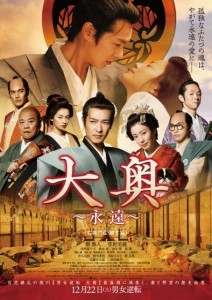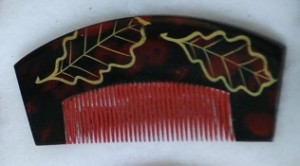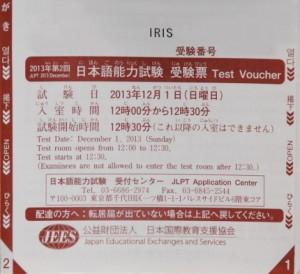When the capital of Japan was transferred to Kyoto in 794 (then known as Heian-kyo), the emperor’s living quarters were called the Dairi imperial residence. When the Dairi was destroyed by fire, the emperor moved his private residence to the palaces of other noble families in the city. Clearly, it must have been a great honour for those families, and the number of imperial (ex-) residences (or Sato-dairi) in Kyoto makes it easy to believe that the emperor was rather forthcoming with this kind of favour. From the latter half of the Heian period (794 – 1185), the original imperial residence fell into disuse, and the emperor moved for good into the Sato-dairi. In 1331, emperor Kogen was crowned in a Sato-dairi called Tsuchi-Mikado-Higashi-no-Toin-Dono, and subsequently, it became the new imperial palace, the starting point of today’s imperial palace or gosho. It remained the residence of the emperor until 1869, when the imperial household left Kyoto and moved to Tokyo after the Meiji restoration.
The imperial palace, like many parts of Kyoto, was destroyed by fire several times in its 500 year history, it was often reconstructed, but also new buildings were added throughout. So, when you visit the palace, there are many different architectural styles to be seen, starting from the bright red buildings with endless corridors of the Heian time to the Otsunegoten, the emperor’s private residence in the Shoin-style of 1590. The latest addition to the palace, however, is the Shinmikurumayose – a new entrance for carriages that was built for the 1915 enthronement ceremony of emperor Taisho.
 When you enter the palace grounds through the Gishumon gate, you first pass the Okurumayose entrance for dignitaries and then you see the Shodaibu-no-ma, a waiting room, or, rather, three adjacent waiting rooms, decorated according to the rank of the people who would have to wait there for their audience.
When you enter the palace grounds through the Gishumon gate, you first pass the Okurumayose entrance for dignitaries and then you see the Shodaibu-no-ma, a waiting room, or, rather, three adjacent waiting rooms, decorated according to the rank of the people who would have to wait there for their audience. 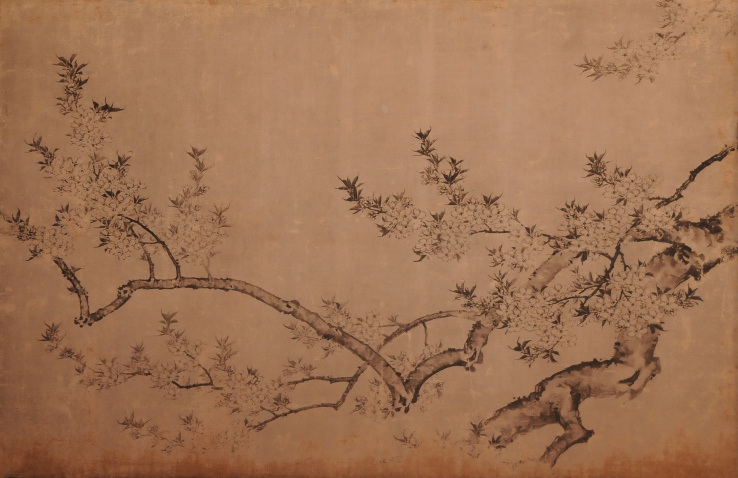
Other than those visitors of old, you have to take a more roundabout way: You pass the Shinmikuru-mayose and the red Heian-style corridors to get to the Nikkamon Gate leading to the Shishinden, the most important building of the palace. It was used for enthronement ceremonies for example, and there is the Chrysanthemum throne in the centre and the smaller empress’s throne to the right of it. Sitting on the throne (no, you’re not allowed to enter any of the buildings), you behold to the South a large Japanese Zen-style “garden” of raked white gravel, the only living things in there are a cherry and a mandarin tree.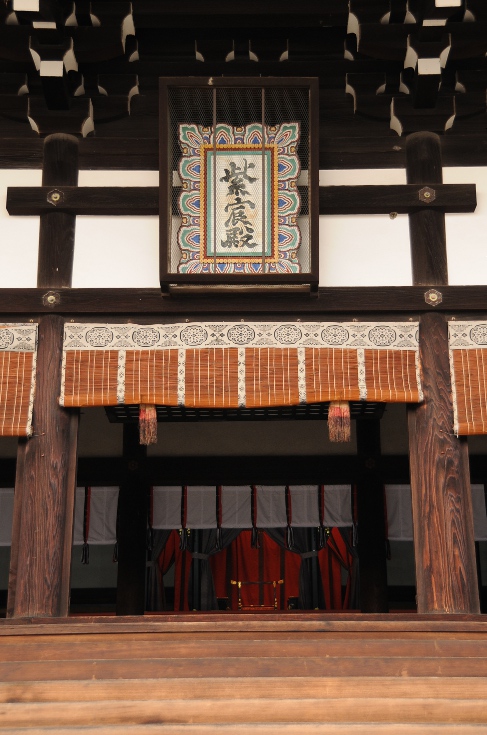
You then move past the Shishinden to the Seiryoden, a reconstruction of the emperor’s residence built in the 8th century, where the emperor would receive visitors. Opposite the Kogosho and Ogakumonjo-buildings (for meetings with lower ranking people and lesser ceremonies in general), there is a beautiful Japanese garden called the Oikeniwa. 
Its pond is meant to resemble the sea, pebble beach included, but the red koi do not quite fit that image. Finally, you get a glimpse at the Otsunegoten, the private residence of the emperor. It is the largest structure of the palace grounds with 15 rooms and faces the Gonatei, the emperor’s private garden. This is the end of the tour and you exit through the Seishomon gate.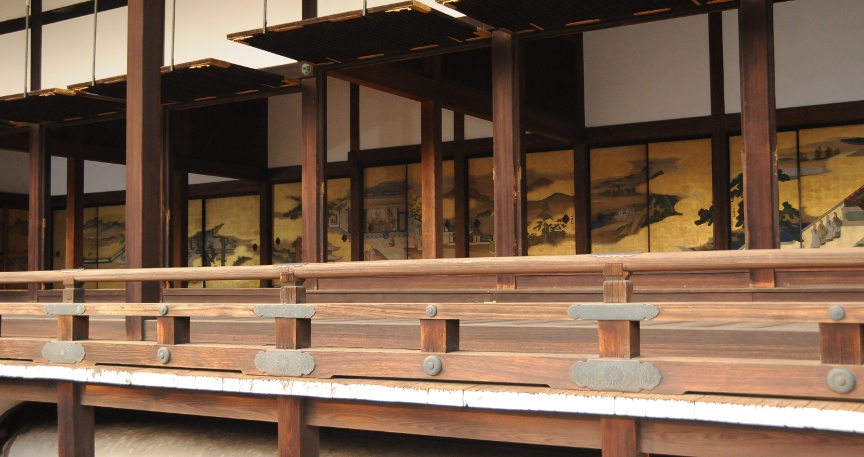
The Imperial Palace covers an area of about 110.000 square metres. It is enclosed by a wall, and lies inside the Kyoto National Gardens, which covers more than 900.000 square metres and is enclosed by another wall. To visit the palace, you must first register with the Imperial Household Agency. You can do this either online or in person in their office in the garden. You can go as late as 20 minutes before a tour, but it’s better to be early. There are currently two free tours in English from Monday to Friday. Don’t forget your passport! Check out the homepage of the Imperial Household Agency for more details.


